It's officially spooky season! Follow along with us as we celebrate all things spooky, odd, or spine-tingling in the ocean and atmosphere with 31 days of NOAA Spooky Science!
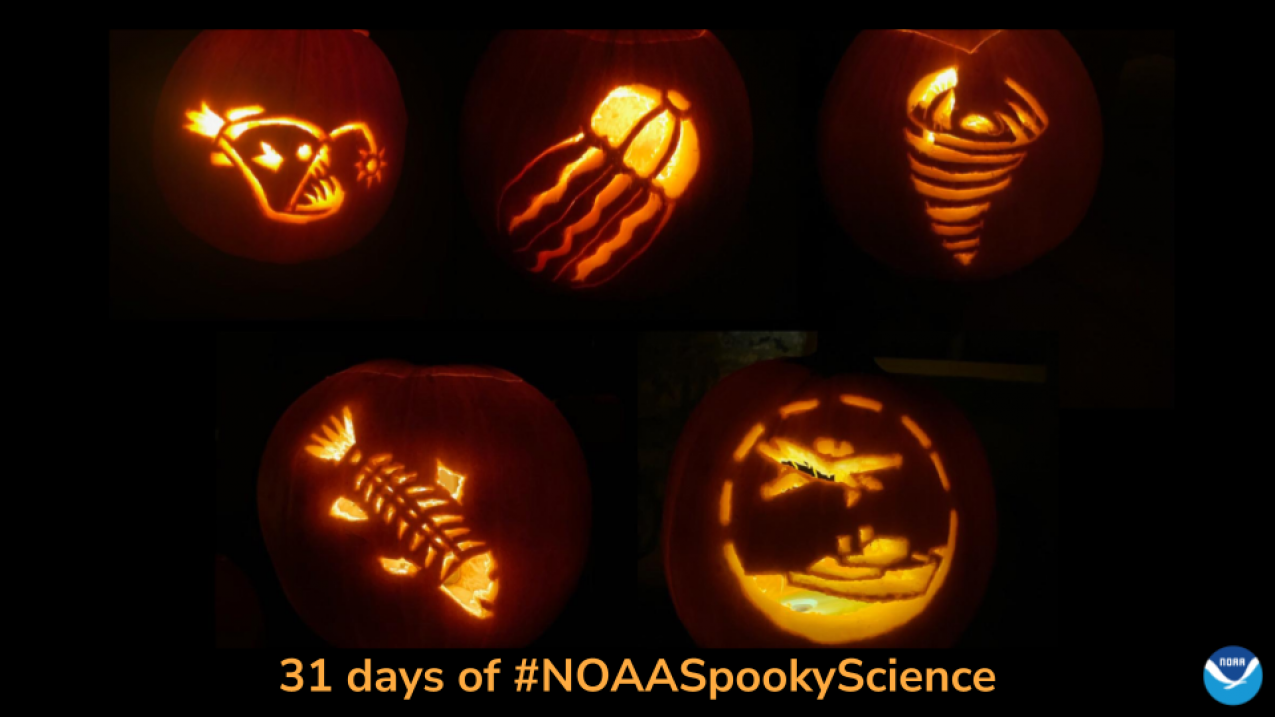
Happy Halloween! These pumpkins were carved by NOAA Office of Education's very own talented intern, Kaleigh Ballantine, and her family, using carving templates Kaleigh created for the office! (Image credit: Kaleigh Ballantine/NOAA Office of Education)
Check back daily for chilling, creepy content that you can use in and out of your classrooms and institutions, or with your loved ones at home. Follow these fascinating facts on social media with #NOAASpookyScience. We're @NOAAeducation on Facebook, Twitter, Instagram, and LinkedIn offsite link.
Jump to:
October 1: Spooktacular smartphone wallpaper gallery
October 2: Going batty for ancient climate data
October 3: What is a vampire squid and a vampire fish?
October 4: Creatures of a whale fall
October 5: Severe weather 101, Lightning types
October 6: Halloween pumpkin carving templates
October 7: Creatures of the Deep: Sea spider
October 8: Climate and mummies
October 9: Creatures of the Deep: Chimaera
October 11: America's spooktacular October climate
October 13: Deep-sea octopuses
October 14: Hurricane Hunter footage
October 15: Space weather phenomena
October 17: Exploring shipwrecks
October 18: What is the "Bloop?"
October 19: Did I find the lost underwater civilization of Atlantis?
October 21: Things that go bump in the deep sea
October 22: What is a ghost forest?
October 23: What is a dead zone?
October 24: An ode to the Moon
October 25: Rare footage of giant squid
October 26: Look what the net dragged in
October 27: Leatherback sea turtle throat
October 28: Deep dive greatest hits
October 29: Paint your own SciJinks pumpkins!
October 30: Davidson Seamount, Oasis in the deep
October 31: Wrap up #NOAASpookyScience
October 1: Spooktacular smartphone wallpaper gallery
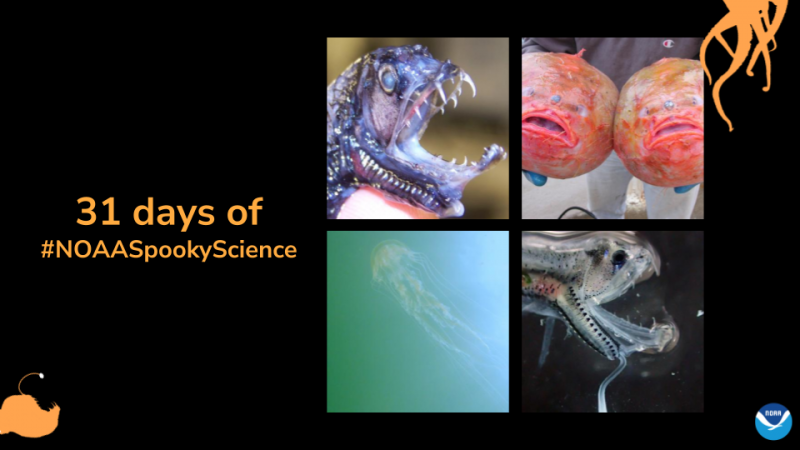
Kicking off 31 days of NOAA Spooky Science is NOAA Fisheries with their spooktacular smartphone wallpaper gallery! From the vicious viperfish to the deadly dragonfish, these photos are sure to add some Halloween flair to your phone!
October 2: Going batty for ancient climate data
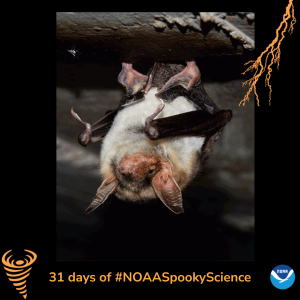
You’ll go batty reading this NOAA Spooky Science fact from the NOAA National Centers for Environmental Information! A paleoclimate dataset — derived from bat guano — provides insight into climate conditions from way back in 950 AD ... Who knew you could get that kind of information from bat poo?
October 3: What is a vampire squid and a vampire fish?
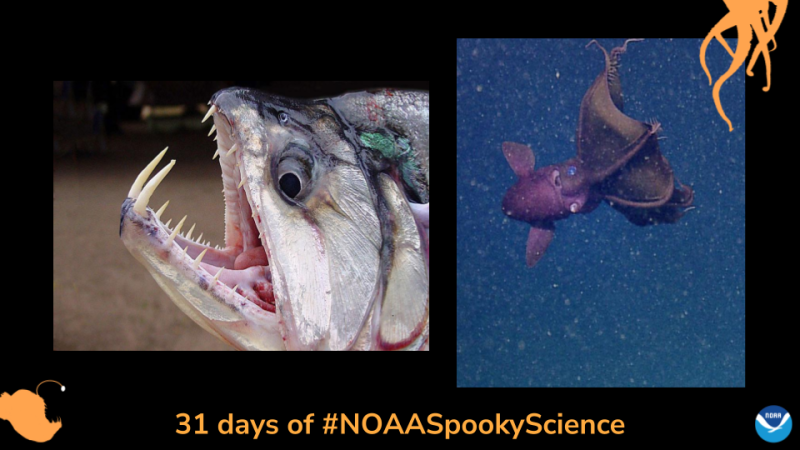
Did you know there are underwater vampires? Okay, maybe not the bloodsucking mermaid you might be picturing, but some equally eerie creatures. Read all about about the vampire squid, a scary cephalopod of saltwater depths, and the vampire fish, a fanged freshwater fiend in this NOAA Spooky Science resource from the National Ocean Service.
October 4: Creatures of a whale fall
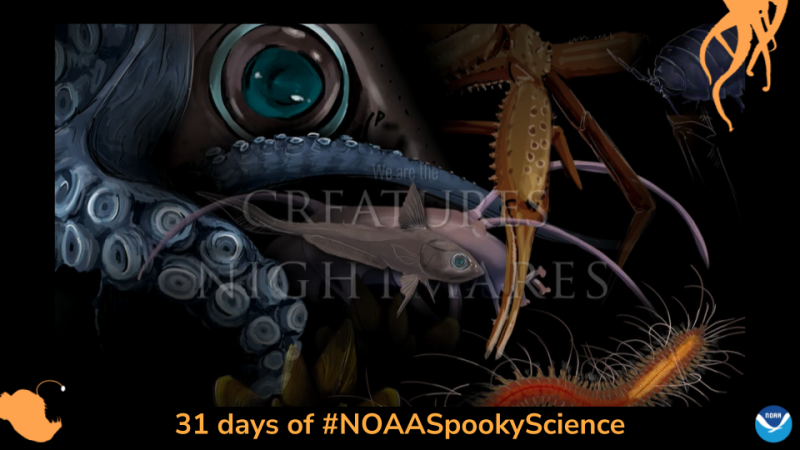
This NOAA Spooky Science feature is sure to leave you feeling creepy crawly! From the NOAA Office of National Marine Sanctuaries, see what happens when a whale dies and sinks to the seafloor. Hey, the little guys gotta eat, too! You'll be surprised what crawls out of the deep...
October 5: Severe weather 101, Lightning types
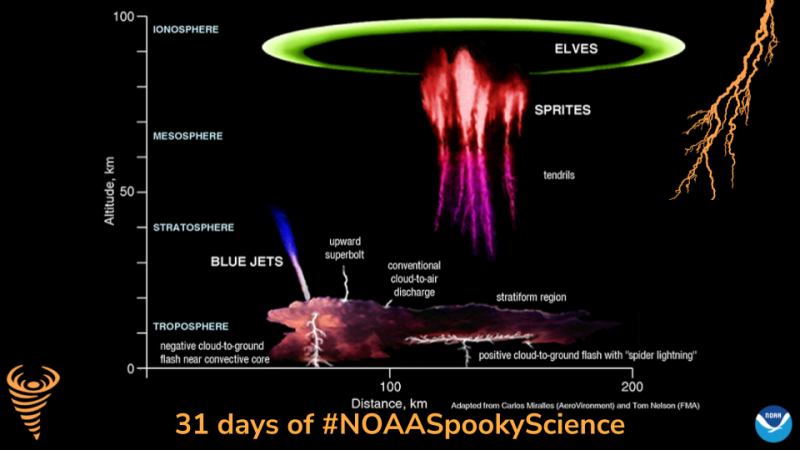
Red sprites, blue jets, and elves, oh my! Did you know that these mysterious cousins of lightning can appear high in the atmosphere during a large thunderstorm? This NOAA Spooky Science resource from the NOAA National Severe Storms Laboratory is filled with strange, spine-chilling storm science.
October 6: Halloween pumpkin carving templates
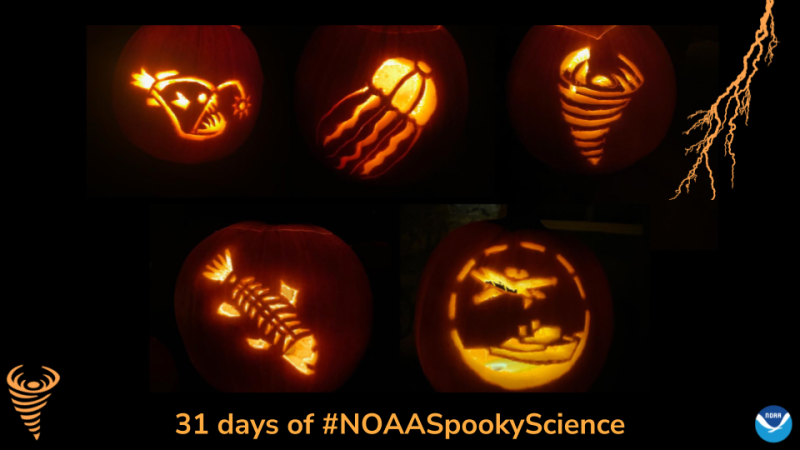
Still thinking about a design for your jack-o-lantern this year? Look no further! Carve out some time for Halloween fun and choose one of our NOAA-themed pumpkin carving templates. Let us know which NOAA Spooky Science template you choose!
October 7: Creatures of the Deep: Sea spider

What’s more frightening … Spiders or SEA spiders?! We thought spiders were limited to land until watching this NOAA Spooky Science video! Okay, they’re not really spiders, but we’re not totally spinning you a web of lies. Check out these spider-like creepy crawlers from NOAA Ocean Today.
October 8: Climate and mummies
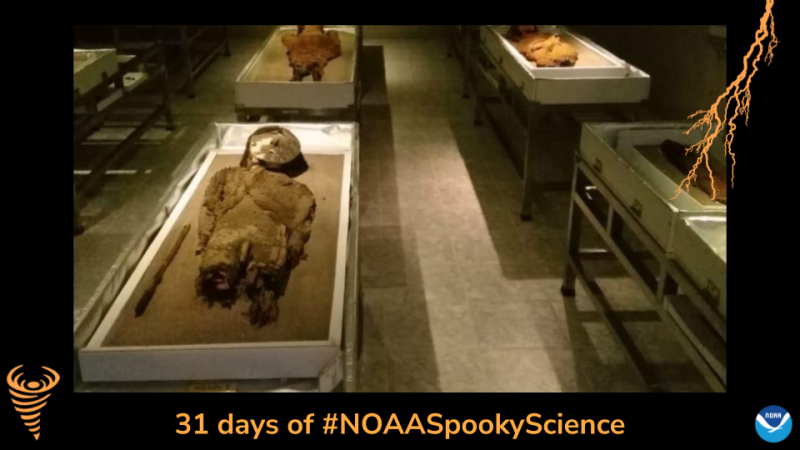
Mummies at a museum in Chile are turning to black ooze … but, why? Find out from NOAA Climate.gov how climate change is playing a role in this mysterious mummy mess!
October 9: Creatures of the Deep: Chimaera
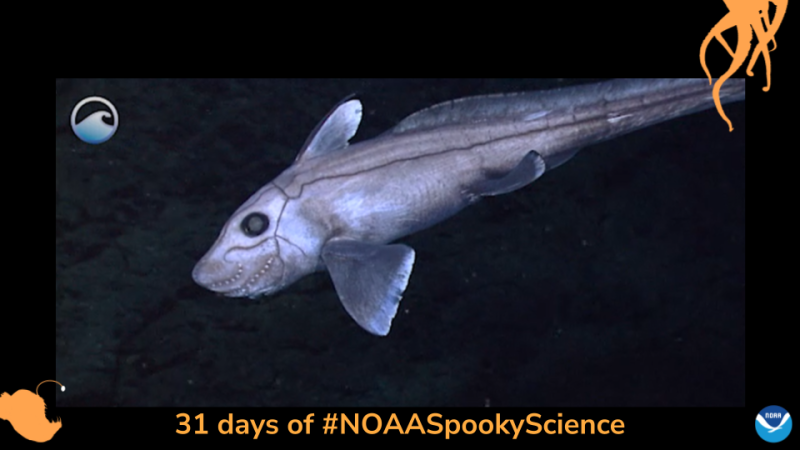
It has no bones, it lurks in the dark, and it’s sometimes called a “ghost shark.” This denizen of the deep checks all the boxes for NOAA Spooky Science! Do you know what it is? Find out from NOAA Ocean Today.
October 10: Ghost fishing
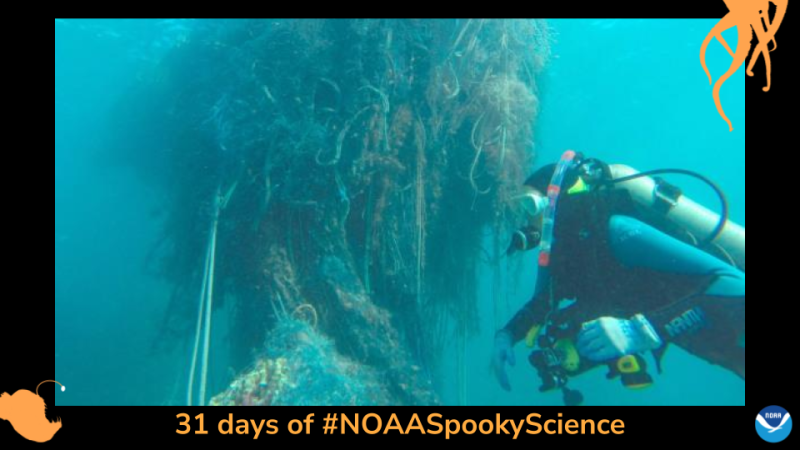
If brain-eating zombies give you a scare, then, dear reader, you better prepare! There are undead fishing nets that roam the sea, you’ll shake in your waders reading this NOAA Spooky Science story from NOAA Marine Debris.
October 11: America's spooktacular October climate
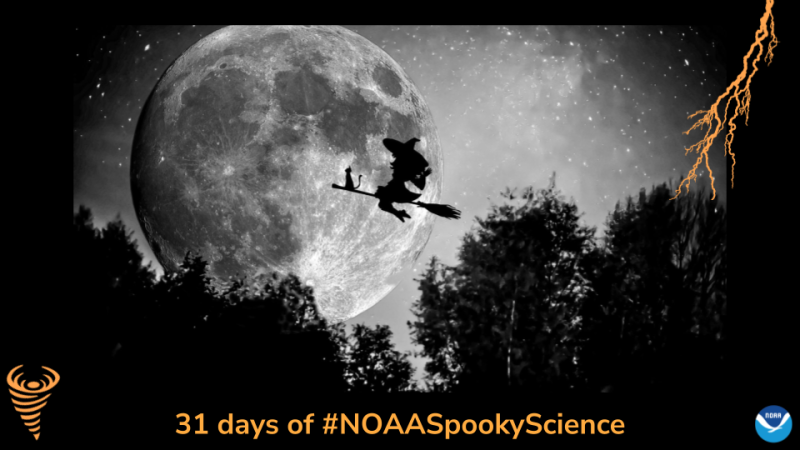
Halloween marks a tricky time of year for meteorologists and climatologists as autumn is in full swing across the Northern Hemisphere. Check out this NOAA Spooky Science resource from the NOAA National Centers for Environmental Information to learn about the wicked weather variations that Halloween has from year to year.
October 12: Zombie satellites
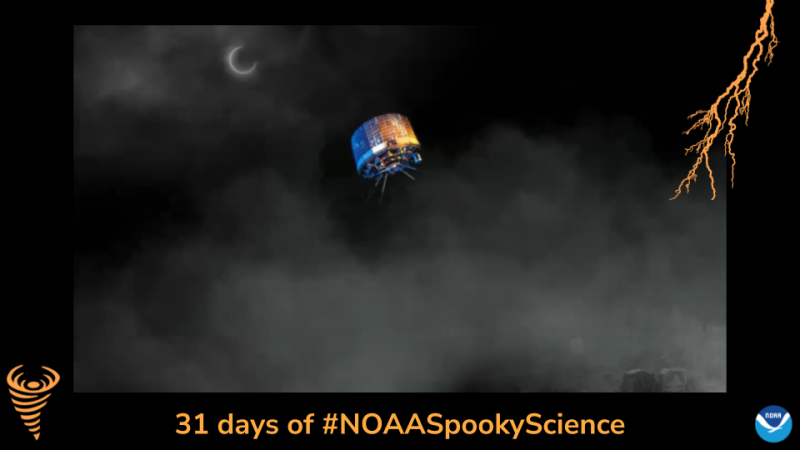
If you’re prepared for ghosts, ghouls, and goblins this Halloween, you might want to also consider zombies … zombie satellites, that is. Should we fear the graveyard orbit of un-dead satellites? Find out in this NOAA Spooky Science resource from NOAA Satellites.
October 13: Deep-sea octopuses
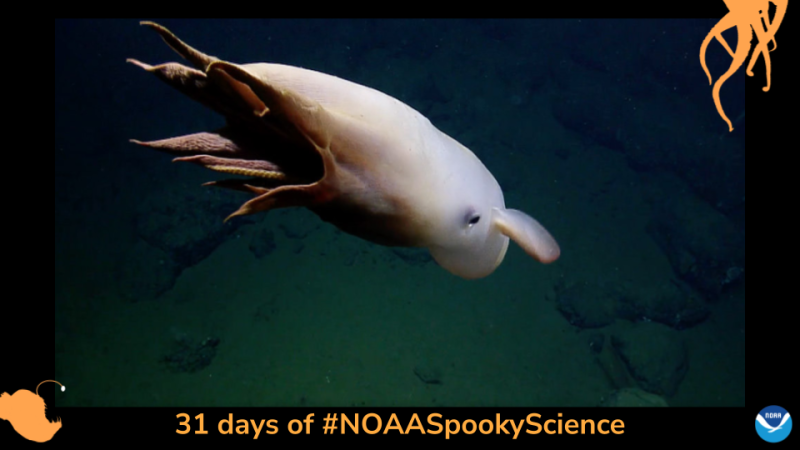
A garden of ghouls and ghastly creatures lurk in the deep. One creature has eight suckered arms, three beating hearts, and eats with a beak that can deliver a venomous bite. Do you know what this NOAA Spooky Science video from Monterey Bay National Marine Sanctuary features?
October 14: Hurricane Hunter footage
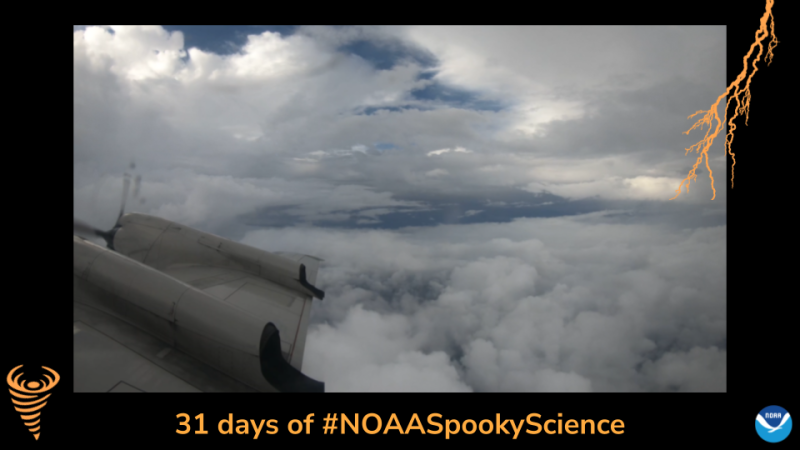
Flying into the eye of a hurricane sounds nightmarish for some, but for others it’s a thrill that helps collect life-saving data about hurricanes and storm patterns. If you had the chance to bring this daunting dream to life, would you?
October 15: Space weather phenomena
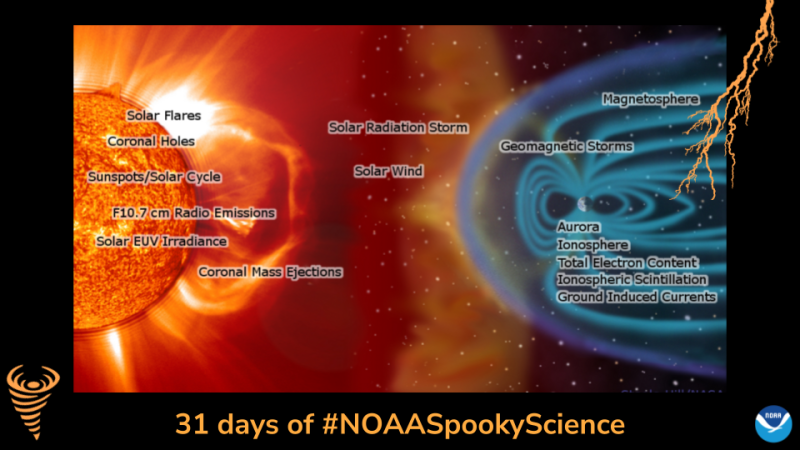
Atmospheric phenomena like geomagnetic storms can scare the casual observer, resembling a gathering of ghastly green ghouls or make it appear as if the sky is on fire. This NOAA Spooky Science resource has all the information you need to learn about space weather.
October 16: Whale fall poster
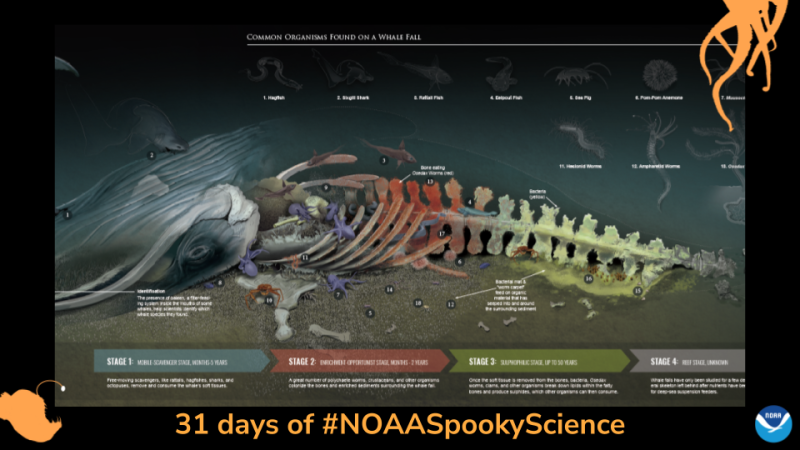
You’ve learned from an earlier NOAA Spooky Science about what happens when a whale dies and sinks to the seafloor. Now, download these especially eerie posters from NOAA Sanctuaries to better understand the creepy crawlies that feed off the carcass.
October 17: Exploring shipwrecks
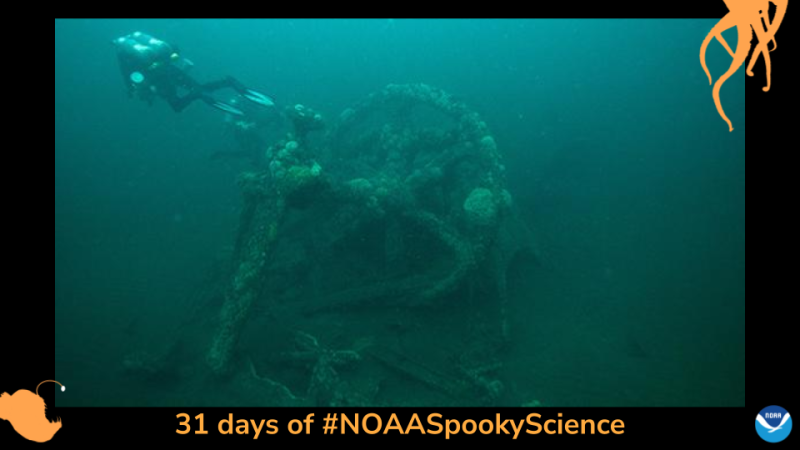
There’s a sea of memories waiting to be explored at shipwreck sites around the country. This NOAA Spooky Science resource has info on shipwrecks from the Civil War through World War II.
October 18: What is the "Bloop?"
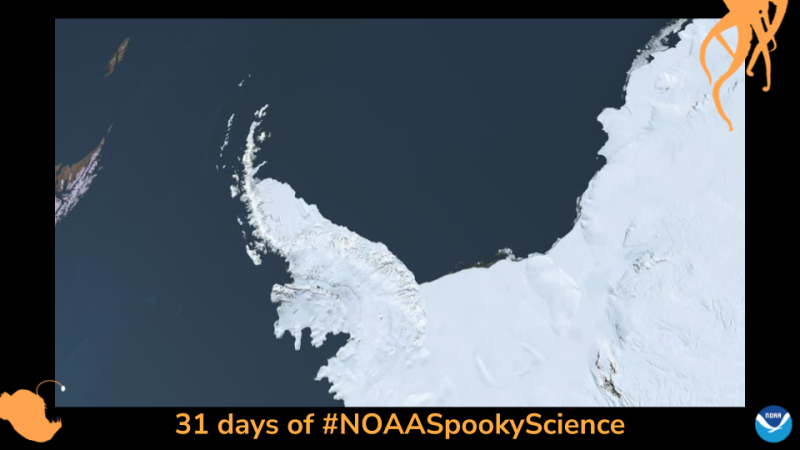
In 1997, a mysterious underwater sound was captured by researchers in the southern Pacific ocean. Was the “Bloop” caused by secret underwater nymphs, giant squids, or a sea creature unknown to science? Or, something else entirely? Find out in this NOAA Spooky Science resource from the National Ocean Service.
October 19: Did I find the lost underwater civilization of Atlantis?
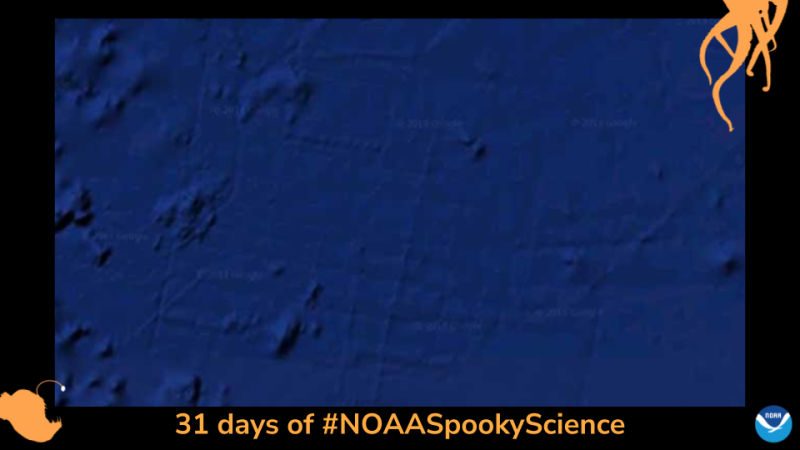
Parts of the ocean seafloor are marked by mysterious formations of grid-like artifacts. Could these markings be remnants of lost cities or underwater streets? Find out with this NOAA Spooky Science resource from the National Ocean Service.
October 20: Obscuration types
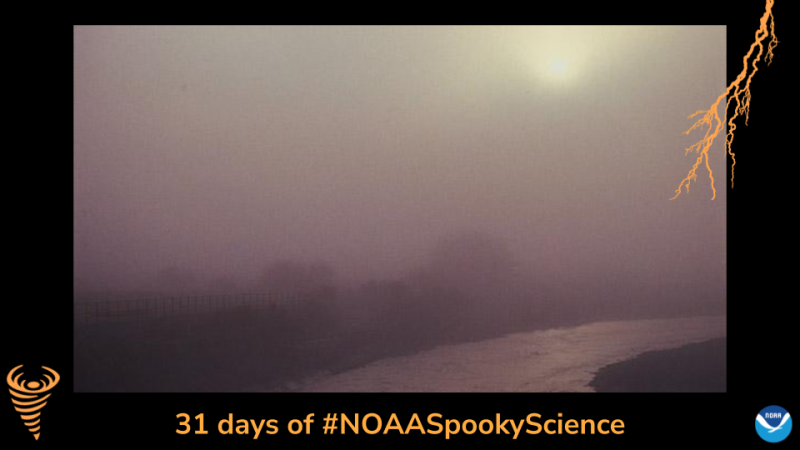
Every good scary movie uses fog, mist, or a dreary haze to create suspenseful, foreboding scenery. Though these obscurations may add mystery to a story, the reason they appear in the atmosphere isn’t mysterious at all. NWS explains in this NOAA Spooky Science resource.
October 21: Things that go bump in the deep sea
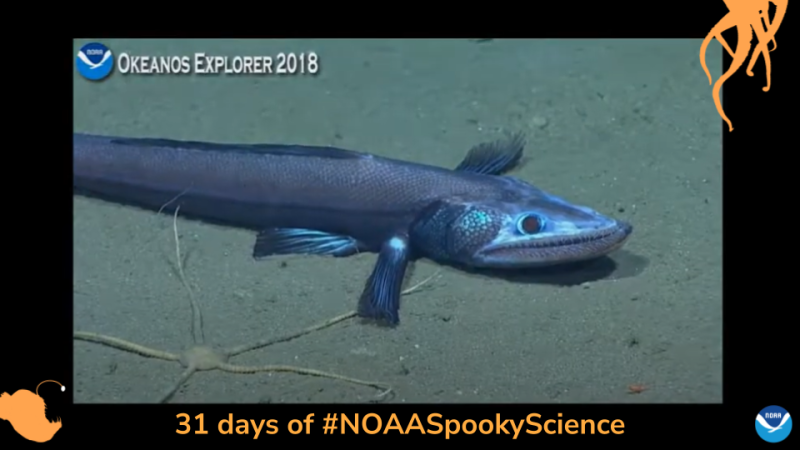
It is the world’s deepest living superpredator ... anything it meets, it eats, including individuals of its own kind. Do you know which creepy creature offsite link we’re featuring for NOAA Spooky Science today?
October 22: What is a ghost forest?
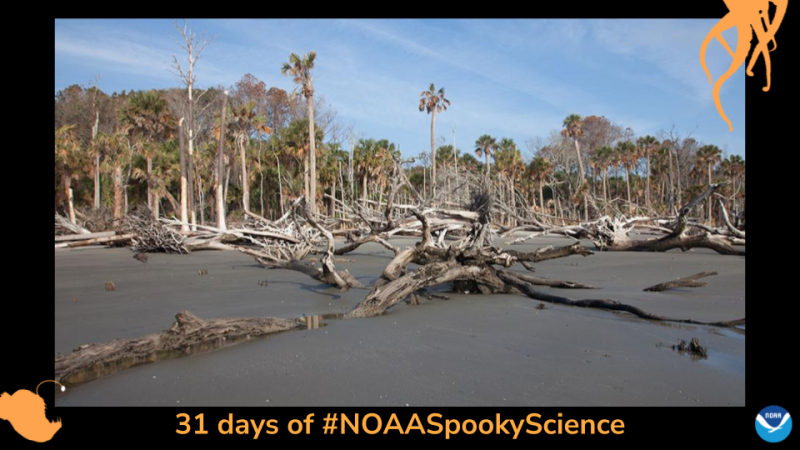
What insidious poison can reduce a once verdant woodland to a ghost forest haunted by dead and dying timber? *shivers* Find out the answer to this spooky whodunit in this NOAA Spooky Science resource from the National Ocean Service.
October 23: What is a dead zone?
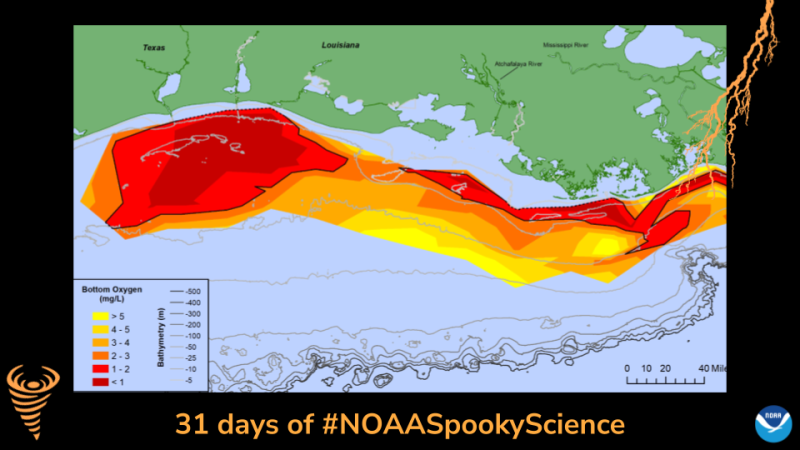
A “dead zone” may sound like an area where zombies congregate, but it’s actually an area that has reduced levels of oxygen in the water, turning habitats once teeming with life into, essentially, biological deserts. Want to know more? Check out this NOAA Spooky Science resource from the National Ocean Service.
October 24: An ode to the Moon
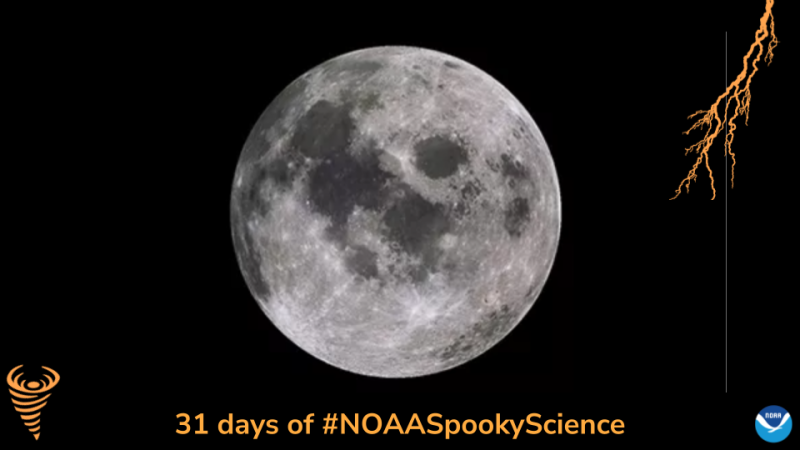
Are we sure there isn’t a werewolf over in NOAA Satellites? In this NOAA Spooky Science resource, “An ode to the Moon,” find out how GOES-R satellites use the moon to their advantage (and ‘just happen’ to catch breathtaking glimpses of the moon).
October 25: Rare footage of giant squid
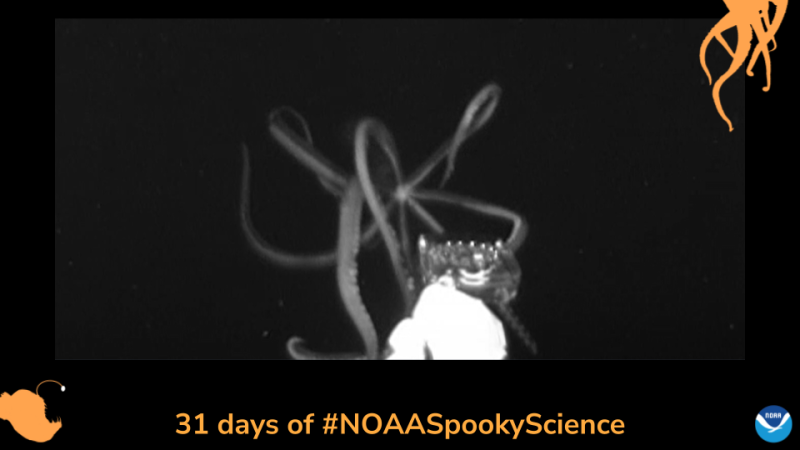
Does Bigfoot give lessons on avoiding detection? The giant squid might need to enroll at this rate — Did you know that a NOAA-funded expedition recorded a giant squid in its deep water habitat, making this the second time the elusive creature has been filmed? Learn more from NOAA Research.
October 26: Look what the net dragged in
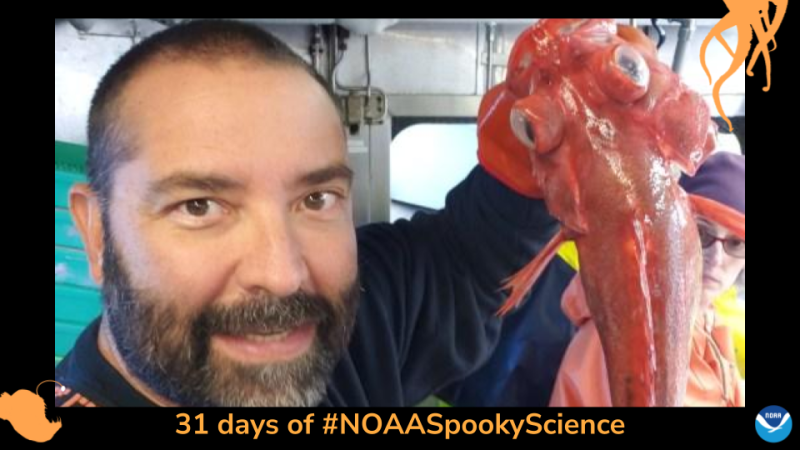
Jellyfish, rockfish, and lumpsuckers, oh my! You never know what you’ll find when you dip a net into the deep ocean! Check out this NOAA Spooky Science story from a past Teacher At Sea alum offsite link.
October 27: Leatherback sea turtle throat

Appearances aren't everything! The inside of a leatherback sea turtle's throat may look scary, but this adaptation actually helps these sea turtles digest their food. Called papillae, these "spikes" are similar to very coarse hairs and are made out of the same protein that make up our human fingernails! The papillae line the sea turtle's mouth to help them get a grip on their slippery jellyfish meals. Learn more about the NOAA Spooky Science endangered leatherback turtle.
October 28: Deep dive greatest hits
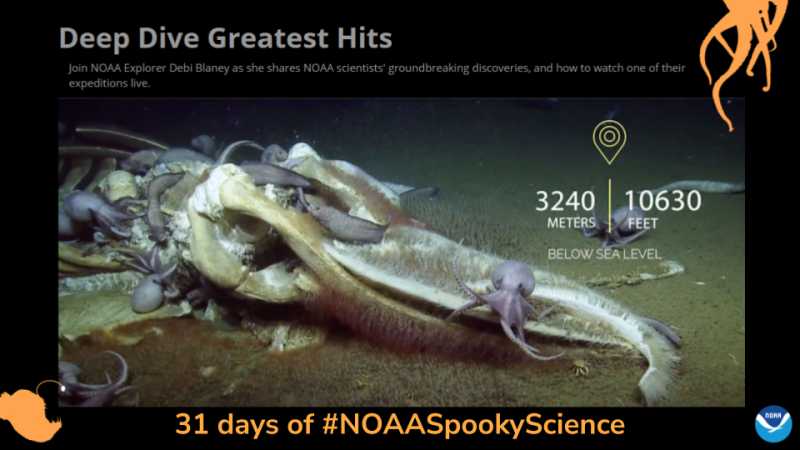
Deep dive into depths unknown with NOAA Ocean Today’s greatest hits. A video sure to make you ponder the ocean and its fascinating marine life and unusual habitats. Watch this NOAA Spooky Science feature.
October 29: Paint your own SciJinks pumpkins!

Carving pumpkins isn’t for you? NOAA SciJinks tells you how to paint your own pumpkins with this NOAA Spooky Science resource! Print out one of their awesome templates to get started.
October 30: Davidson Seamount, Oasis in the deep
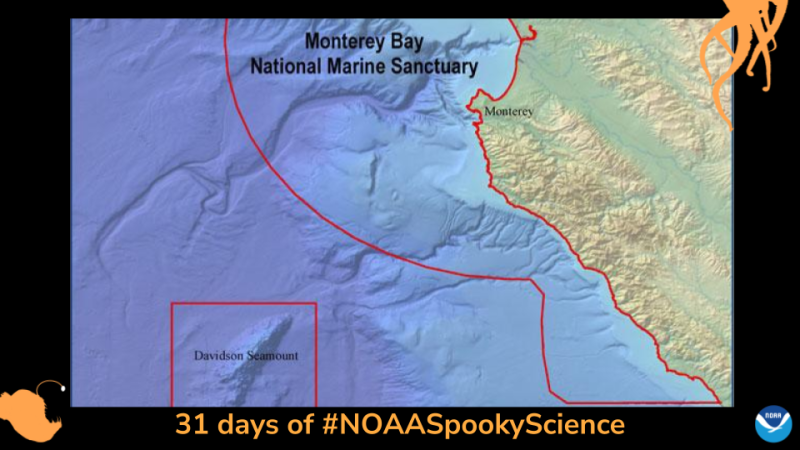
Called the “oasis of the deep,” the Davidson Seamount — an underwater volcano that emerges from the seafloor off the coast of CA — was the first undersea feature to be characterized as a “seamount,” in 1938. Learn more about these hotspots for biodiversity in this NOAA Spooky Science resource.
October 31: Wrap up #NOAASpookyScience

Happy Halloween! Thank you all for following along with NOAA Spooky Science this month. Feel like you missed a few days? Check out our article where you can relive all the chilling, creepy content we shared this month!


